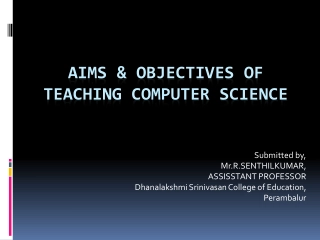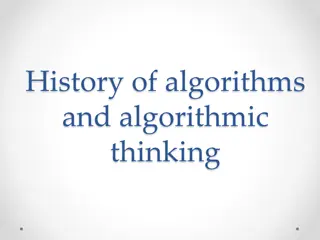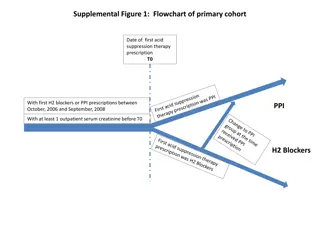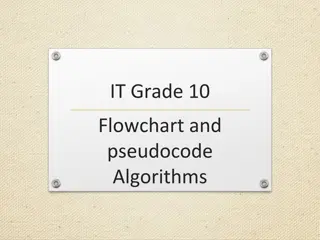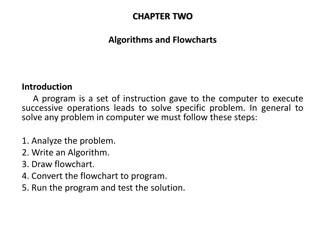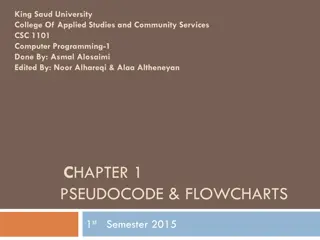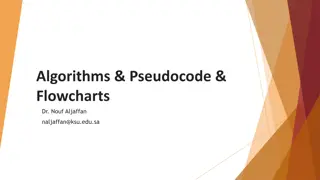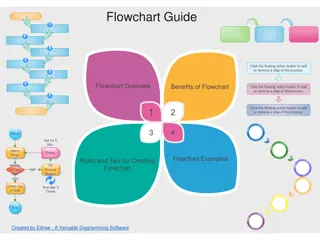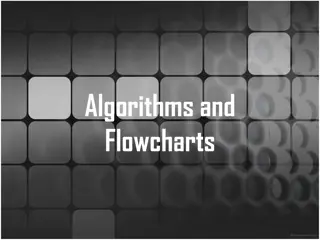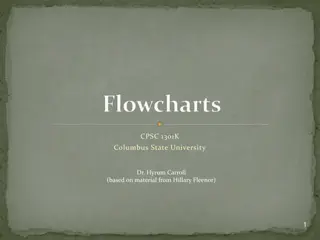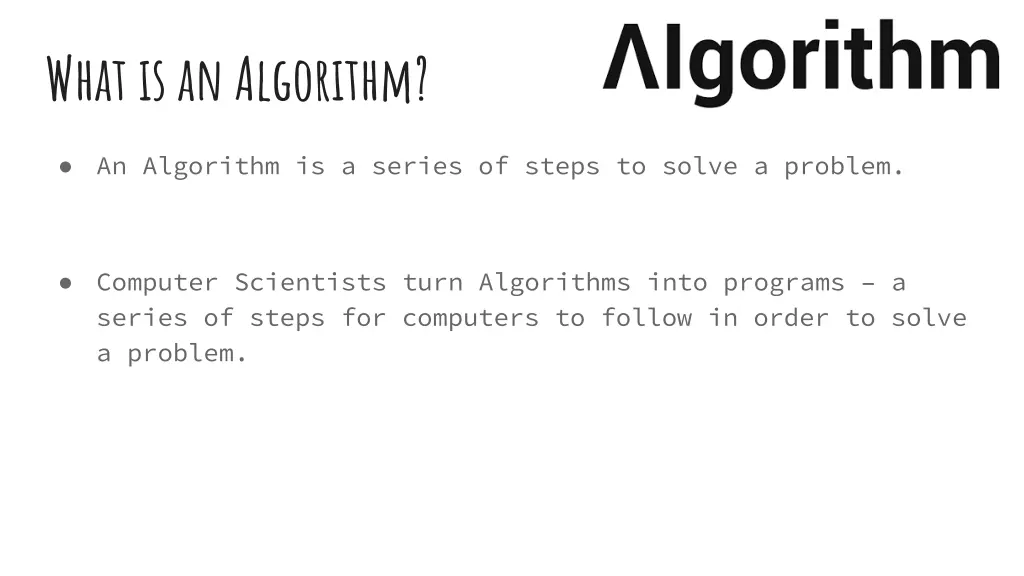
Understanding Algorithms, Flowcharts, Pseudocode, and Iteration
Explore the concepts of algorithms, flowchart symbols, pseudocode, and iteration processes in programming. Learn how to structure and plan algorithms using pseudocode, implement flowcharts to visualize processes, and optimize code execution through iteration techniques like count-controlled loops.
Download Presentation

Please find below an Image/Link to download the presentation.
The content on the website is provided AS IS for your information and personal use only. It may not be sold, licensed, or shared on other websites without obtaining consent from the author. If you encounter any issues during the download, it is possible that the publisher has removed the file from their server.
You are allowed to download the files provided on this website for personal or commercial use, subject to the condition that they are used lawfully. All files are the property of their respective owners.
The content on the website is provided AS IS for your information and personal use only. It may not be sold, licensed, or shared on other websites without obtaining consent from the author.
E N D
Presentation Transcript
What is an Algorithm? An Algorithm is a series of steps to solve a problem. Computer Scientists turn Algorithms into programs a series of steps for computers to follow in order to solve a problem.
Flow Chart Symbols All flowcharts begin with the START symbol. This shape is called a Terminator. L1 - T1 INPUTS indicate external entry of data e.g. entering a username/password during a login PROCESSES indicate a task carried out by the program like performing a calculation Result = a + b The DECISION symbol checks a condition before carrying on. Two paths must be identified here based upon whether the condition is met or not e.g. Is it raining? Yes or No! OUTPUTS indicate the delivery of data from the program like displaying a calculation result on the screen or writing data to a file. All flowcharts end with the END symbol. This shape is also called a Terminator.
What does Pseudocode mean? Pseudocode means fake code . It looks like code, but it is written so that humans understand it, rather than computers. Programmers use Pseudocode to plan their algorithms. It can be understood by any programmer. Pseudocode will not run in Python or any other programming language, but it can be used as a plan to start writing real code.
Pseudocode L2 - T1 Pseudocode looks like code What does this mean? What does code look like?! How is it different to a normal sentence or paragraph? Pseudocode includes the following things that make it look like code: Indentation Command words Loops IF statements
Flowchart Pseudocode Actual Code!
Iteration Iteration is the process of repeating sections of a program to achieve a particular target or goal. Also known as a Loop There are 2 main categories: Count controlled loop Condition controlled loop
Iteration -Count Controlled Loops Count controlled loops are usually implemented with a FOR loop. This will loop a predetermined number of times, for example: FOR every item in a list FOR every number in a range of numbers FOR each player in the game
Iteration -Condition Controlled Loops Condition controlled loops are usually implemented with a WHILE loop or REPEAT UNTIL loop. These will loop as long as a certain condition is met, for example: Move forward until an obstacle is met Keep flying until you run out of fuel Spawn enemies until score is greater than 10
sorting Algorithms -BUBBLE The Bubble sort repeatedly works through a data set, on each iteration it: Compares each adjacent set of items Swaps them if they are in the wrong order On each pass, the largest item bubbles up to the top! The process is repeated until the data set is sorted.
sorting Algorithms -BUBBLE A bubble sort algorithm goes through a list of data a number of times, comparing two items that are side by side to see which is out of order. Copy of Bubble Sort Animation.mp4
Bubble Sort -EXAMPLE The list 2,1,4,3,6,5 can be sorted in 1 iteration. There will be 5 comparisons, and 3 swaps. SWAP NO SWAP SWAP NO SWAP SWAP
Merge Sort The Merge Sort Algorithm is an example of a Divide-and-Conquer algorithm and takes advantage of two facts: Small lists are easy to sort It is easier to merge two ordered list than two unordered lists
Merge Sort Merge Sort Animation.mp4
Merge Sort The Merge sort is split into 2 main steps: Split / Divide Merge
Linear search Linear search is the simplest searching algorithm It simply works through the list 1 item a time. It checks each item to see if it is the one we are looking for. If it is, is stops and returns the position, otherwise it moves on to the next item until it reaches the end of the list
Binary Search Binary Search Animation.mp4
Binary Search Binary search repeatedly discards half the list, making it very efficient with big lists Even if we double the size of the list, the algorithm only has to do 1 extra check

